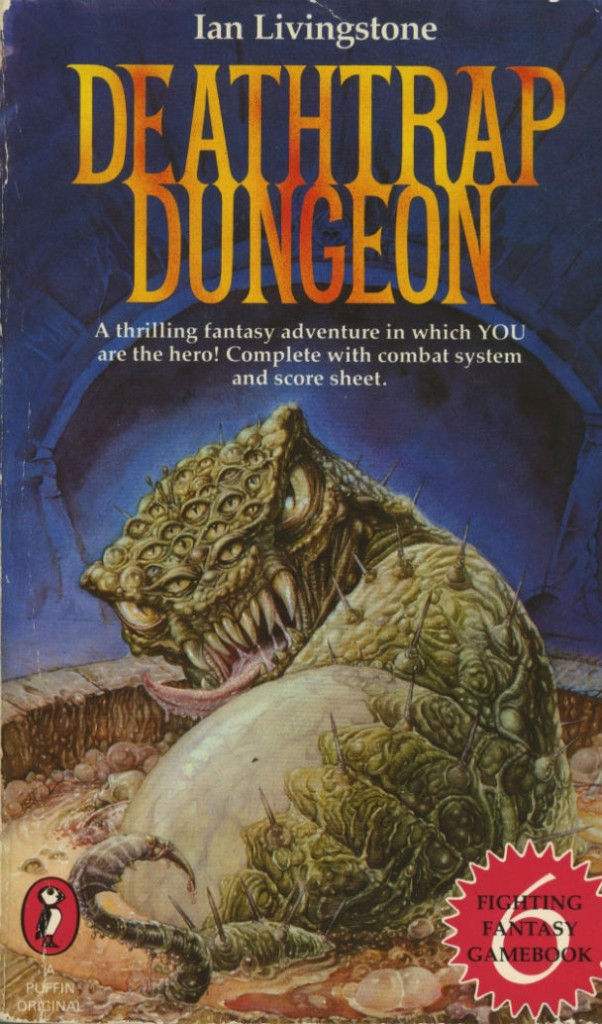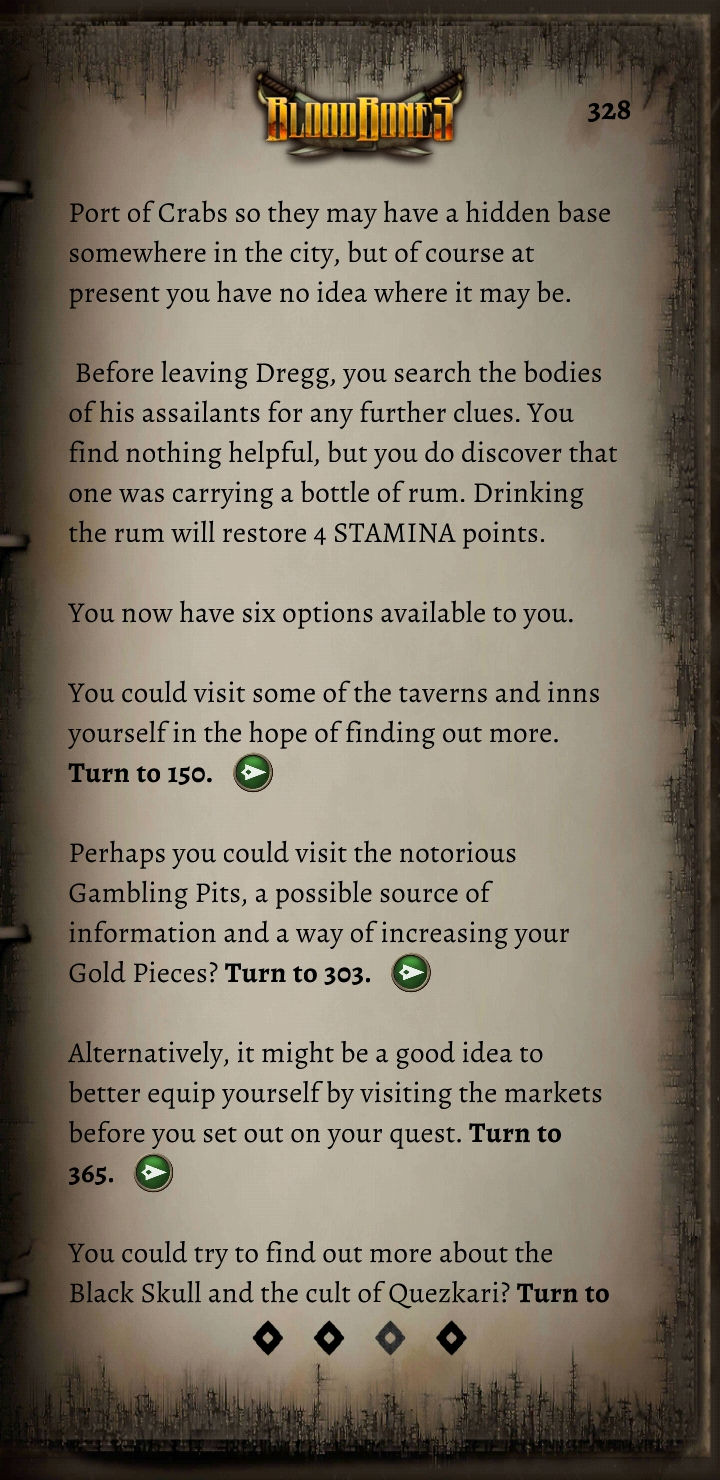Fighting Fantasy: The Video Games
- Graeme Mason

- Feb 22, 2019
- 5 min read
Updated: Mar 27, 2020

Created by Ian Livingstone and Steve Jackson in the early Eighties, the Fighting Fantasy choose-your-own-adventure books swiftly became a phenomenon that continued well into the following decade. Video game ports of some of the most successful books were inevitable, and it didn’t take publisher Puffin (an imprint of Penguin Books) long to dips its toe in the water of digitized Fighting Fantasy.

As the first title in this iconic series, The Warlock Of Firetop Mountain has inspired a board game and even a Nintendo Switch re imagining. But way back in 1984, Puffin itself released the first Fighting Fantasy computer game on the ZX Spectrum, based on this book. After observing the success of Crystal Computing’s Halls Of The Things, the publisher discussed with creators Simon Brattel and Neil Mottershead the idea of creating a similar arcade adventure. While visually identical, the result was a huge increase in game size as the coders wrestled with compression techniques to give the publisher the massive maze that it desired. An unfortunate side-effect of this was the absence of gameplay variety: Warlock’s screens are one empty experience after another, lacking the compact and exciting nature of its forebear. Even important improvements in artificial intelligence – the player leaves an invisible trail which the monsters are able to follow, thus tracking them through multiple screens – were neutered by the lack of enemies.

Undeterred, Puffin forged ahead with its own planned series of games based on Fighting Fantasy. One of the criticisms of Warlock had been the lack of connection with the source material. In fact, Crystal’s game bore almost no resemblance to Jackson and Livingstone’s work save its title and an appearance of the eponymous Warlock, should the player have the patience to slog through those hundreds of similar screens. What Puffin itself created was almost the exact opposite: a word-for-word recreation of The Forest Of Doom, down to the character creation at the beginning, followed by reams of text and numbered options for the player to select. Unfortunately, even in 1984, gamers were used to a little more interaction and a lot less reading. Consequently, Forest Of Doom’s successor, The Citadel Of Chaos, saw little if any release as Puffin gave up on the games market and focused on the books themselves, a shame considering its book and game compilation packs offered excellent value for would-be adventurers.

In the early days of computer gaming, that aforementioned level of interactivity was most notably displayed in text and graphic text adventures, and this was the logical next step for Fighting Fantasy. Released on the Amstrad CPC, Commodore 64 and ZX Spectrum, Seas Of Blood was developed by adventure experts, Adventure Soft. Playing more like a traditional adventure than The Forest Of Doom, Seas Of Blood saw the player assume the role of a buccaneering pirate, becoming the scourge of the high seas in the pursuit of a pile of gold and nautical glory. Despite its limited release by Adventure Soft itself, Seas Of Blood clearly showed how a balance between the text-based books and a more visual gaming medium could be achieved. Buoyed by the success of its acquisition of Fighting Fantasy rights, the developer planned a number of subsequent releases, according to advertisements from 1985. However, when it got into financial difficulties, planned adaptations of superhero caper Appointment With F.E.A.R. and Demons Of The Deep fell by the wayside. UK publisher US Gold stepped in to ensure Rebel Planet and Temple Of Terror saw the light of day, while plans to release historical epic Sword Of The Samurai were abandoned.

Alas, as the books went from strength to strength (by the end of 1987, 30 gamebooks had already been released), that appeared to be the end of Fighting Fantasy video games. Adventure games, such a staple of the early years of gaming, swiftly fell in popularity as the arcade genre and graphical arcade adventures took over. Then, in 1998, three years after the final Fighting Fantasy book had been published, the series was reignited in video game form once more thanks to co-creator Ian Livingstone and publisher Eidos.

At its roots, Fighting Fantasy had always been about traditional dungeon crawl-style adventuring, and these books usually proved to be the most popular with fans. Deathtrap Dungeon, book six in the series and written by Livingstone, had been a bestseller in 1984, and when its author began discussions with the Tomb Raider publisher, it was an apt choice to base a new video game upon. Deathtrap’s plot focuses on the Trial Of Champions, a contest organised by the nefarious Baron Sukumvit. The player must compete with five other adventurers in a quest to defeat numerous monsters, navigate the dungeon’s maze and collect a fortune in the process. Released on the Sony PlayStation and PC in 1998, Deathtrap Dungeon presents a third-person view of the action as the player aims to triumph in the Trial Of Champions. With creator Ian Livingstone directly involved in its development, the game evocatively captures much of the essence of the source book, shoe-horned into a familiar action adventure maze game. The result is as rock-hard as the walls to the dungeon; nonetheless, Deathtrap Dungeon proved a decent seller on the PlayStation in particular.
Today, the home of Fighting Fantasy video games is Tin Man Games and its range of official mobile apps for Android and iOS, PC and Mac. Now you can sit back and enjoy some of the most prominent stories from the series such as House Of Hell, Starship Traveller, Forest Of Doom and Caverns Of The Snow Witch, all from the comfort of your mobile or PC. Included in these virtual editions is an automated adventure sheet, those classic illustrations in full (now in colour) and new artwork and sound effects. Tin Man’s combat engine mimics the original system, with mobile users also able to shake their device in order to roll the dice for that full authentic feel. Plus there’s a cheat mode for those wishing to just experience the story, replacing the multiple-fingers method for working around the original book.

And finally, many years after it inspired readers all over the world, the first Fighting Fantasy book, The Warlock Of Firetop Mountain is as big as it ever was. After a successful Kickstarter campaign in 2015, Tin Man has released this classic adventure on PC (2016) and iOS (2017). Taking the book closer to its table-top RPG roots, the game is a clever re-imagining, adapting the story for a modern age. Within its beautiful 3D world, miniature figures scurry around as the famous artwork and words pop up and stir the nostalgic memories. Recently minted on the Nintendo Switch, this game banishes the dull 1984 Spectrum effort forever, and is a must for any fan of Fighting Fantasy.
Now choose your path - for all the latest retro news and views, turn to our Facebook page. For more articles and to be the first to hear the latest Antstream Arcade gossip, turn to our mailing list.








Comments